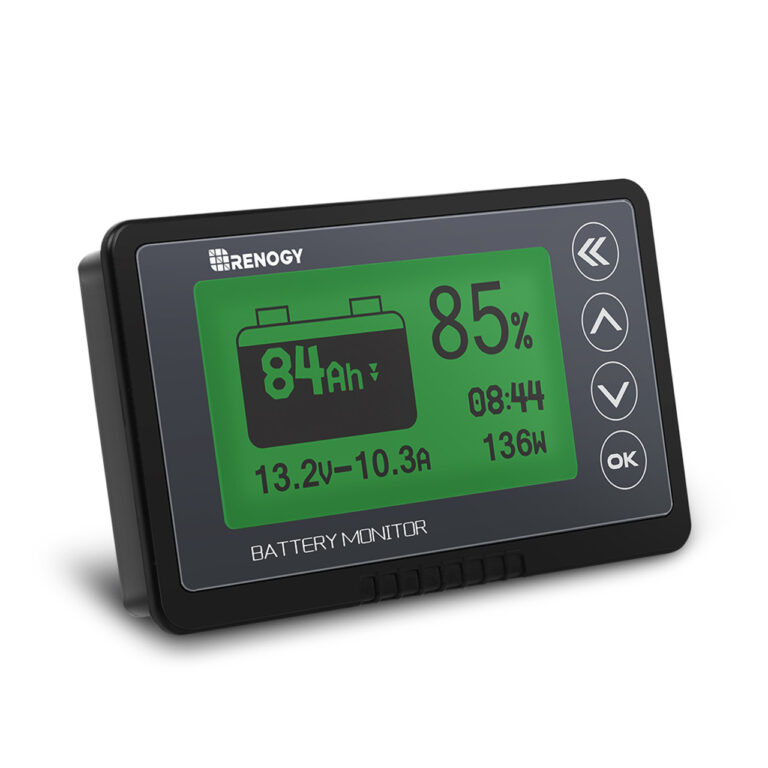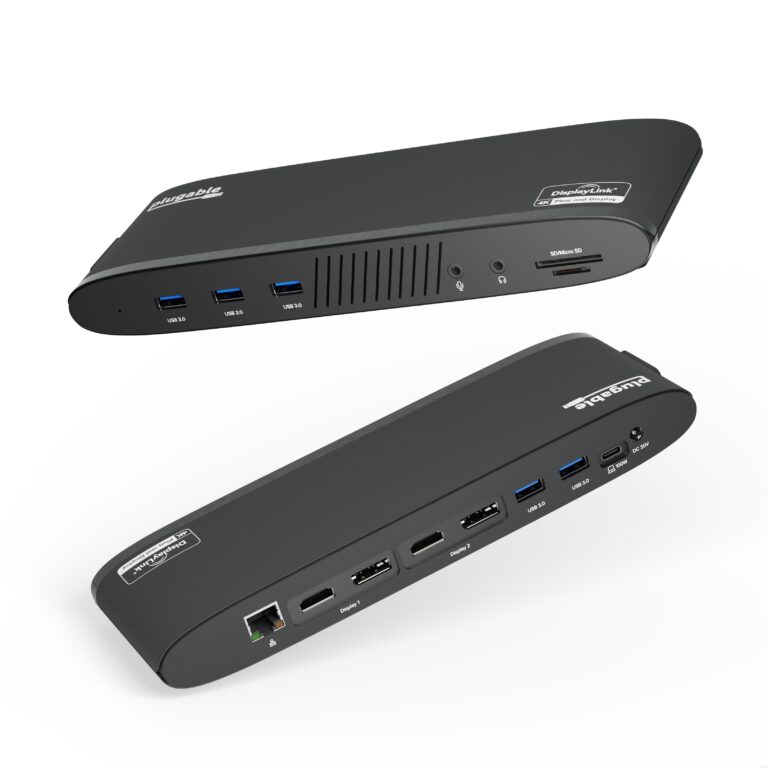Why is My Mouse Not Going to My Second Monitor? Discover Solutions Now
If your mouse is not going to your second monitor, you can try physically setting the second monitor on the left and then going to Settings > System > Display to drag the second screen and place it on the left of the main screen. This should allow you to move the cursor from the main screen to the second screen through the left side.
Having multiple monitors can greatly enhance productivity and multitasking abilities. However, there are occasions when your mouse may not move to your second monitor, causing frustration and hindering your workflow. We will explore why your mouse may not be able to move to your second monitor and provide you with a simple solution to resolve this issue.
By following these steps, you can quickly regain control of your mouse and seamlessly navigate between multiple screens for a more efficient working experience.

Credit: blog.hubspot.com
Uncover Reasons Behind Mouse Monitor Trouble
If you’re experiencing trouble with your mouse not going to your second monitor, you can easily fix it by adjusting the display settings on your computer. Simply go to Settings > System > Display and drag the second screen to the left of the main screen.
This will allow you to move your cursor from the main screen to the second screen seamlessly.
Assess Display Settings & Configuration
One possible reason why your mouse is not moving to your second monitor could be due to incorrect display settings and configurations. Misaligned or misconfigured display settings can restrict the movement of the cursor between monitors.
- Go to Settings on your computer.
- Select System from the options.
- Choose Display settings.
- Drag the second screen and position it on the left of the main screen.
- This will enable you to move the cursor from the main screen to the second screen through the left side.
Understanding Display Interface Limitations
Another factor to consider is the limitations of the display interface. Different display interfaces have varying capabilities and may not support seamless mouse movement between monitors. This can result in the mouse getting stuck on one screen.
To troubleshoot this issue, check if your display interface supports dual monitors and if it allows for easy cursor movement between screens. Refer to your monitor’s user manual or manufacturer’s website for detailed information on the display interface limitations.
Recognizing Hardware Compatibility Hiccups
In some cases, hardware compatibility issues can hinder the movement of the mouse between monitors. It is essential to ensure that both your mouse and second monitor are compatible with each other and with your computer system.
- Check if your mouse and second monitor are compatible with your operating system.
- Verify that the mouse drivers are up-to-date.
- Ensure that the cables connecting the second monitor to your computer are securely plugged in.
Evaluating Operating System Quirks
Operating system quirks can sometimes cause mouse monitor trouble. Outdated system software or driver issues can lead to an unresponsive mouse or prevent it from moving to the second monitor.
Here are some steps to address this issue:
- Check for any available updates for your operating system and install them.
- Update the mouse drivers to the latest version.
- If using a wireless mouse, try turning off and on the Bluetooth connection.
By following these troubleshooting steps, you can uncover the reasons behind your mouse monitor trouble and resolve them effectively.
Second Screen Setup Troubles
Having troubles with your second screen setup and wondering why your mouse isn’t going to the second monitor? One solution is to go to Settings > System > Display and drag the second screen to the left of the main screen.
This should allow you to move your cursor from the main screen to the second screen through the left side.
Second Screen Setup Troubles Setting up a second monitor can greatly enhance your productivity and multitasking capabilities. However, it can be frustrating when your mouse fails to move to the second monitor as expected. If you’re experiencing this issue, don’t worry! In this section, we will explore some troubleshooting steps to help resolve this problem. Let’s dive into the details.Confirm Monitor Connection And Detection
First and foremost, ensure that both monitors are properly connected to your computer. Check the cables and make sure they are securely plugged in. Sometimes, a loose connection can prevent your second monitor from being detected. If the issue persists, proceed to the next step.Review Primary And Secondary Monitor Settings
Next, double-check your primary and secondary monitor settings. On Windows, navigate to the Settings menu by clicking on the Windows Icon in the Taskbar (or press the Windows key) and search for “Display Settings.” Once you’re in the Display Settings, click on “Multiple Displays.” Here, you can verify if your monitors are correctly identified and set up.Adjusting Display Arrangement For Smoother Transition
Sometimes, an incorrect display arrangement can cause your mouse to not move seamlessly between monitors. To address this, click and drag the second screen in the Display Settings and position it on the left or right side of your main screen, as per your setup. This adjustment will help your mouse transition smoothly between screens.Delving Into Advanced Display Settings
If the previous steps didn’t solve the issue, let’s explore the advanced display settings. Within the Display Settings menu, look for the advanced display settings section. Here, you might find additional options such as refresh rate, resolution, or scaling settings. Be cautious while tweaking these settings, as any incorrect adjustments can lead to further display issues. In conclusion, the troubleshooting steps mentioned above should help you resolve the issue of your mouse not going to your second monitor. By confirming monitor connections, reviewing primary and secondary monitor settings, adjusting display arrangement, and exploring advanced display settings, you can ensure a seamless multi-monitor experience.Explore Settings For Seamless Mouse Movement
To ensure seamless mouse movement between your monitors, go to Settings > System > Display, and drag the second screen to the left of the main screen. This will allow you to smoothly move your cursor from the main screen to the second screen.
Display Orientation And Order Adjustments
When you have multiple monitors set up, it can be frustrating when your mouse cursor does not seamlessly move from one monitor to another. One possible reason for this issue could be the display orientation and order settings. It is important to ensure that the orientation and order of your monitors are correctly set up to enable smooth mouse movement. To explore this setting, you can go to the “Settings” option on your computer. From there, navigate to “System” and then click on “Display”. Here, you will find the display orientation and order adjustments. By dragging the second screen and placing it on the left or right of the main screen, you can change the positioning and enable the cursor to move between the monitors through the specified side.Resolution Matching Between Monitors
Another factor that can affect your mouse flow across multiple monitors is the resolution matching between the screens. When the resolution settings of your monitors do not match, it can lead to compatibility issues and hinder smooth cursor movement. To ensure resolution matching, you can access the display settings on your computer and carefully check the resolution settings for each monitor. Make sure that the resolution is set to the same value on both screens. This will help maintain a consistent layout and enable your mouse cursor to move seamlessly across the monitors without any gaps or glitches.Scaling Options Impact On Mouse Flow
Sometimes, the scaling options you choose for your monitors can also impact the flow of your mouse cursor. Scaling refers to the size of the interface elements on your screen. If the scaling settings for your monitors are not consistent, it can cause misalignment and disrupt the mouse movement. To investigate the impact of scaling options on your mouse flow, you can access the display settings and explore the scaling options for each monitor. Ensure that the scaling settings are set to the same percentage on all screens. This will help maintain alignment and ensure a smooth transition of your mouse cursor between the monitors. By exploring these settings for seamless mouse movement, including display orientation and order adjustments, resolution matching between monitors, and the impact of scaling options, you can troubleshoot and resolve the issue of your mouse not going to your second monitor.Navigating Multimonitor Mouse Woes
If you are facing issues with your mouse not going to your second monitor, you’re not alone. Navigating multimonitor mouse woes can be frustrating, but there are several troubleshooting steps you can take to resolve the issue. In this article, we will explore some common solutions to help you get your mouse cursor moving seamlessly across both screens.
Tinkering With Mouse Properties And Speed
One of the first things you can try when encountering mouse issues on your multimonitor setup is tinkering with mouse properties and speed settings. Follow these steps to adjust your mouse settings:
- Go to the Control Panel by clicking on the Start button and selecting Control Panel.
- Click on the Mouse icon to access the Mouse Properties.
- In the Mouse Properties window, navigate to the Pointer Options tab.
- Adjust the pointer speed by moving the slider to a comfortable level.
- Check the box next to “Enhance pointer precision” if it is not already checked.
- Click Apply and then OK to save the changes.
By tweaking these settings, you can improve the responsiveness of your mouse cursor and potentially resolve any issues with it not reaching the second monitor.
Analyzing Software Conflicts Blocking Cursor
Software conflicts can sometimes interfere with the movement of your mouse cursor across multiple monitors. To analyze and address any potential software conflicts, consider the following steps:
- Open the Task Manager by pressing Ctrl + Shift + Esc or by right-clicking on the taskbar and selecting Task Manager.
- In the Task Manager window, navigate to the Processes or Details tab.
- Look for any applications or processes that might be causing conflicts.
- Right-click on the conflicting application or process and select End Task or End Process.
By ending the task or process of the conflicting software, you can eliminate any potential barriers to your mouse cursor movement.
Checking For Driver Updates Or Reinstallation
Outdated or malfunctioning drivers can often be the culprit behind mouse issues on a multimonitor setup. To check for driver updates or reinstall drivers for your mouse, follow these steps:
- Open the Device Manager by pressing Windows key + X and selecting Device Manager from the menu.
- Expand the “Mice and other pointing devices” category.
- Right-click on your mouse device and select Update driver or Uninstall device.
- If you choose to update the driver, follow the on-screen instructions to search for and install the latest driver.
- If you choose to uninstall the device, restart your computer and Windows will automatically reinstall the driver.
Updating or reinstalling your mouse driver can often resolve compatibility issues and restore the proper functionality of your mouse across multiple monitors.
How To Align For Cursor Continuity
If you’re experiencing issues with your mouse cursor not moving to your second monitor, don’t worry, you’re not alone. One of the common causes for this problem is the incorrect alignment of your monitors. Fortunately, there are several ways to align your monitors and ensure cursor continuity. In this article, we will explore different strategies to streamline the transition, customize the taskbar, and leverage hotkeys and shortcuts for effective monitor management.
Streamlining The Transition With Display Alignment
When using multiple monitors, it’s important to ensure that they are aligned correctly. Here are the steps to align your monitors for cursor continuity:
- Go to Settings > System > Display on your computer.
- Drag the second screen and place it on the left side of the main screen.
- By physically setting the second monitor on the left, you can now move the cursor from the main screen to the second screen through the left side.
Customizing The Taskbar For Intuitive Use Across Screens
The taskbar plays a crucial role in managing multiple monitors. Customizing it can enhance your user experience and make it easier to navigate between screens. Follow these steps to customize your taskbar:
- Click on the Windows Icon in the Taskbar or press the Windows key on your keyboard.
- Search for Display Settings.
- Once in the display settings, click on Multiple Displays.
- Click on Identify to verify which monitor is assigned which number.
Hotkeys And Shortcuts For Effectual Monitor Management
In addition to aligning your displays and customizing the taskbar, utilizing hotkeys and shortcuts can greatly improve the efficiency of managing multiple monitors. Here are a few hotkeys and shortcuts you can use:
| Action | Hotkey/Shortcut |
|---|---|
| Switch between monitors | Win + PgUp or Win + PgDown |
| Show desktop on the current screen | Win + D |
| Open Task Manager | Ctrl + Shift + Esc |
By using these hotkeys and shortcuts, you can streamline the process of managing multiple monitors and ensure a smooth cursor transition.
In conclusion, if you’re facing issues with your mouse cursor not moving to your second monitor, it’s likely due to incorrect monitor alignment. By following the steps outlined above, you can align your displays, customize your taskbar, and leverage hotkeys and shortcuts to enhance cursor continuity and improve your overall multi-monitor experience.
Proactive Monitor Maintenance For Mouse Control
When it comes to using multiple monitors, it can be frustrating to find that your mouse is not going to the second screen. However, there are proactive steps you can take to ensure smooth mouse control and prevent this issue. By implementing regular updates and scheduled maintenance tips, seeking support and utilizing community resources, and investing in quality peripherals, you can enhance your overall experience and easily navigate between monitors. Let’s explore each of these approaches in detail:
Regular Updates And Scheduled Maintenance Tips
To maintain optimal mouse control across multiple monitors, it is crucial to keep your system up to date. Regular updates not only provide bug fixes and security patches, but they also address compatibility issues that can impact your mouse movements. Make it a habit to check for software updates for both your operating system and display drivers. By staying current with the latest updates, you can minimize the chances of encountering mouse-related issues.
In addition to regular updates, implementing scheduled maintenance tips can ensure that your mouse continues to function smoothly with multiple monitors. Perform tasks such as cleaning the mouse sensor, checking cable connections, and optimizing display settings. By following these maintenance practices, you can prevent dirt and dust buildup, resolve any loose connections, and fine-tune your monitor setup for seamless cursor movement.
Seeking Support And Utilizing Community Resources
If you find yourself struggling with mouse control on your second monitor, seeking support and utilizing community resources can provide invaluable assistance. Start by checking online forums, discussion boards, and support communities specific to your operating system or monitor setup. Here, you can find guidance from experienced users who may have encountered similar issues and discovered effective solutions.
Additionally, don’t hesitate to reach out to the manufacturer’s support team for personalized assistance. They can provide troubleshooting steps tailored to your specific setup and offer insights into potential compatibility or configuration issues causing the mouse problem. Remember, seeking support and utilizing community resources can save you time and frustration while helping you regain smooth mouse control on your second monitor.
Investing In Quality Peripherals For A Smoother Experience
In some cases, mouse control issues may arise due to hardware limitations or insufficient peripheral quality. To overcome these challenges, it is worth investing in quality peripherals. Look for ergonomic mice with precise sensors and adjustable DPI (dots per inch) settings. These features can enhance the overall accuracy and responsiveness of your mouse, enabling smooth cursor movement even across multiple monitors.
Additionally, consider the type of connection your mouse uses. Wireless mice, while convenient, may face interference or latency issues, impacting their performance. If you frequently rely on multiple monitors, opting for a wired mouse can provide a more stable and reliable connection.
By investing in quality peripherals that are designed to handle the demands of multi-monitor setups, you can ensure a smoother and more enjoyable experience when navigating between screens.
Frequently Asked Questions For Why Is My Mouse Not Going To My Second Monitor
How Do I Fix My Mouse Not Going To My Other Monitor?
To fix your mouse not moving to your other monitor, follow these steps: 1. Go to Settings > System > Display. 2. Drag the second screen and place it on the left of the main screen. 3. This will allow you to move your cursor from the main screen to the second screen on the left side.
Why Wont My Mouse Connect To My Monitor?
To fix the issue of your mouse not connecting to your monitor, check if the second monitor is set up correctly. Go to Settings > System > Display, drag the second screen to the left of the main screen. Now, you should be able to move your cursor from the main screen to the second screen on the left side.
Make sure to align the monitors properly for smooth cursor movement.
How Do I Fix My Mouse Direction On Dual Monitors?
To fix your mouse direction on dual monitors, follow these steps: 1. Go to Settings > System > Display. 2. Drag the second monitor to the left of the main screen. 3. This will allow you to move the cursor from the main screen to the second screen through the left side.
By rearranging the monitors in this way, you should be able to fix the issue with your mouse direction on dual monitors.
How Do I Move My Mouse Between Monitors?
To move your mouse between monitors, follow these steps: Go to Settings > System > Display. Drag the second screen to the left of the main screen. This will allow you to move the cursor from the main screen to the second screen through the left side.
Conclusion
To ensure your mouse easily moves to your second monitor, follow these steps: Go to Settings > System > Display and drag the second screen to the left of the main screen. By physically positioning the second monitor on the left, you can seamlessly move your cursor from the main screen to the second screen.
If you’re experiencing issues with mouse movement, double-check the orientation and alignment of your monitors. Additionally, troubleshoot potential power, driver, or software problems that may be affecting your mouse’s responsiveness. Find solutions specific to your operating system and setup to optimize your dual monitor experience.



